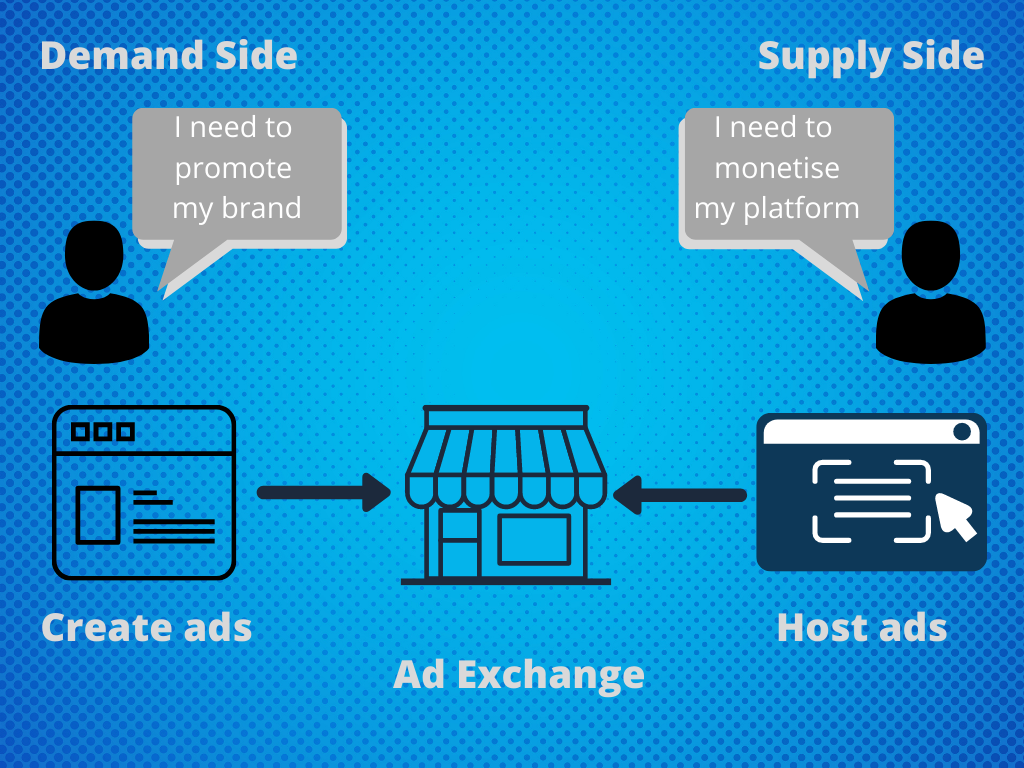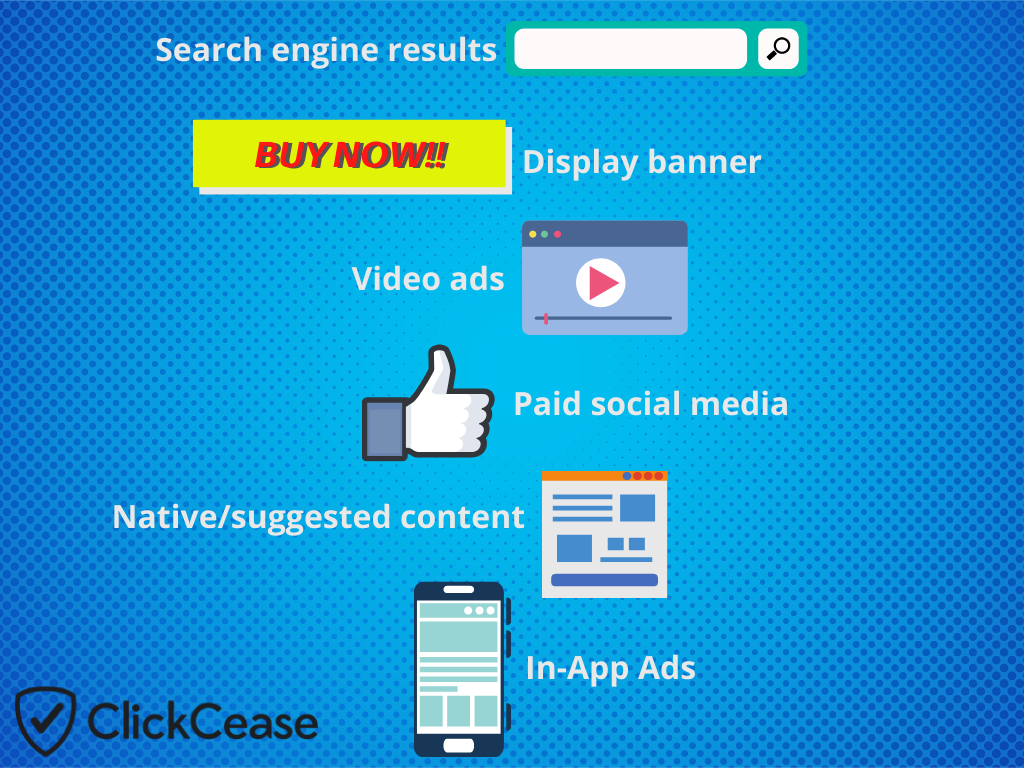In the world of digital marketing, programmatic advertising is one of the most effective options available. This broad term refers to a growing range of advertising channels, with a lot of variables, choices and confusing jargon.
We know that explaining the basics is the best way of getting to grips with these complex marketing processes.
So, we’ve put together this quick guide to programmatic advertising to help you make sense of the terminology and the practices associated with it.
What is programmatic advertising?
Generally speaking, programmatic advertising refers to the buying and selling of advertising media usually via an automated auction.
Being digital, programmatic advertising offers incredible flexibility and control over audience targeting, budget, and the choice of advertising media. It can also offer very insightful data about your business and how your customers behave when it comes to your platform.
By using these automated marketing platforms, advertisers can ensure their ads are seen across a broad inventory of digital publishing channels to maximise their exposure.
To define the term ‘programmatic‘, it means to do something according to a process or schedule. In this respect, programmatic advertising methods use a set of processes and algorithms to display ads to potential customers with the best chance of conversion (in theory).
Using programmatic advertising allows advertisers to:
- Buy advertising space on websites
- Display their search results at the top of search engines
- Display their video ads on websites or during other videos
- Place an ad within an app or other software
You might also hear people refer to programmatic media, or programmatic marketing. These are essentially the same thing – the focus here is on the ‘programmatic’ aspect.
How does programmatic advertising work?
Programmatic advertising usually uses real time bidding, referred to as RTB. Essentially this means that an advertiser sets their budget and their maximum bid and the advertising platform does the legwork of getting their ad seen.
However, there are other methods of managing programmatic advertising, which we’ll look at shortly.
All this means that an ad can be displayed to a targeted customer on an associated website or other channel within milliseconds. Of course there is a complex ecosystem of algorithms and machine learning that make the whole thing work. But for advertisers, this miracle of modern engineering means that you can agree your budget with the platform and rest safe in the knowledge that your ad will be seen hundreds or thousands of times a day.
The most widely understood example of programmatic advertising is probably using Google’s pay per click ads. However, there are plenty of options for RTB advertising platforms, some specialising in display ads and others focusing on native advertising.
What is DSP and SSP?
- DSP stands for demand side platform.
- SSP stands for supply side platform.
Put very simply, the demand side platform (DSP) is the advertiser, which can include specialist advertising software, agencies or reseller platforms. Usually the DSP will allow the advertiser to set up and manage their ad on their platform, which will then be accessible to the SSP.
An example of DSP would be Google Ads, Facebook Ads Manager, Verizon Media, DoubleClick, Microsoft/Bing Ads and AppNexus.
The supply side platform (SSP) refers to the publishers, meaning websites, video channels, apps and software.
An example of SSP would be Google AdSense, AppNexus, Microsoft/Bing Ads and Taboola/Outbrain.
You might notice there is some crossover with some DSPs also acting as SSPs. This is because they allow advertisers to create ads, and they also allow publishers to sign up and host those ads.
These DSPs working directly with SSPs are referred to by another term; the ad exchange.

What is an ad exchange?
An ad exchange is an all-in-one platform where advertisers and publishers can both sign up to host ads, or display their ads. Using an ad exchange usually has great benefits for both publishers and advertisers, as it means access to a broad selection of websites or other digital channels, and a big pool of advertisers too.
Google operates Google Ads, which allows advertisers to create a huge variety of pay per click ads, from paid search results to sponsored video or in-app display ads.
Google also offers Adsense, which allows website owners (publishers) to sign up and offer real estate on their websites to monetise their traffic. Think of any news website these days, and you’ll often see ad banners or ‘sponsored content’, which is this advertising real estate.
Other ad exchanges include Microsoft’s Bing Ads, OpenX and Rubicon Project.
Programmatic media formats
If you’re familiar with pay per click marketing, you’ll be aware of the different formats available for your programmatic marketing. You can of course mix and match, with some ad exchanges specialising in one type of ad, or others offering a more general approach.
Google Ads for example offers almost all of the formats listed here, whereas Facebook Ads focuses on the paid social options. These are the most commonforms of programmatic media available to advertisers.

- Search engine results (SERPs)
Paying to appear at the top of the Google or Bing search results is one of the original models of programmatic advertising. Paid search ensures the link to your business is one of the first things people see when they run a query through a search engine and is still one of the most popular formats.
- Display ads
Banner ads placed on a website are known as display ads. These can be simple images or text, or animated banners. There are a variety of sizes and shapes, depending on the placement of the ad.
- Video ads
Video ads can either be used to embed on external websites, or can play within another video for example on YouTube. In terms of programmatic advertising, video ads are a growing sector and can be very versatile.
Think of ads on Twitter or Facebook, as well as those that run pre-roll (before the main video) on YouTube.
- Paid social ads
There is a whole world of options when it comes to paid social media posting. From sponsored Instagram posts to boosted Tweets or targeted Facebook ads. As part of your programmatic advertising, paid social is a powerful component and one that is always changing.
These days you’ll find options to create Snapchat filters or create surveys on Linkedin as a means to generate views for your ad.
- Native ads
Displaying suggested content within the context of a magazine, shop or social media feed is known as native advertising. This attempts to seamlessly suggest promotional content that might be of interest to casual browsers. For example, suggested products on a shopping platform, or a sponsored post on a popular news website.
- In-App ads
Free to use mobile apps often use in-app ads to monetise their platform. This can be in the form of simple ad banners, pop ups or even in-app rewards, such as watching a video or answering a question. Although this is a form of both native ad and display ad, in-app ads are a form of programmatic advertising in their own right.
- Digital out of home (DOOH)
Traditional billboards and ads on buses are getting a digital makeover and are already becoming more intelligent. Although not yet entirely mainstream, there are a number of companies looking at using digital out of home advertising to retarget based on local demographics or behaviour.
Keep an eye out for DOOH as this is sure to be a key programmatic advertising method in years to come.
How to buy ads using programmatic advertising
The benefit of using programmatic advertising is that the entire transaction is automated. Your ads are displayed in accordance with your preferences, with different bidding and buying options available.
- Real Time Bidding (RTB)
Using RTB allows advertisers to bid on popular search terms, with the highest bid either earning top spot, or one of the available display slots.
On the ad platform, advertisers will set their maximum bid per keyword and their total overall budget. However with many of the ad platforms, such as Google Ads, the platform can increasingly offer ‘smart’ bidding. In theory this means that you can tell the ad platform to bid on your behalf to get the best chances of clicks, conversions or views as required.
- Spot buying
A more traditional way of buying advertising space, spot buying is where an advertiser will secure a deal directly with a publisher. Think of print ads in newspapers, or for TV ads. It’s a similar deal but for digital display ads such as banner ads, sponsored pop ups or video.
This is also referred to as preferred deals, or sponsored posts.
- Private marketplace (PMP)
Halfway between spot buying and RTB, private marketplace functions as a sort of invite only auction. Premium websites will often approach select advertisers and offer them the opportunity to bid on placements on their high authority and high traffic site.
The benefits of using private marketplace are that publishers can attract top tier companies who are willing to pay a bit more to appear on their site, and that the publisher can pre-authorise the advertiser.
- Affiliate marketing links
Another way to monetise a website is by including affiliate marketing links in the content or on website real estate. Although affiliate links are technically not programmatic advertising, they do share some similarities.
Advertisers sign up to host their ad banners on affiliate marketing platforms such as Awin or Commission Junction – and then publishers join and link to their favourite brands.
The benefit for advertisers is that they don’t pay for every impression or click, but usually only when there is a conversion. For publishers there is a lower chance of collecting a payout, and the income is often substantially less than using real programmatic advertising methods.
PPC Agencies or DIY?
Should you choose to manage your programmatic advertising yourself? Or hire an agency to manage your pay per click ads?
This will come down to a number of things such as your time, your budget and your personnel. Of course using an agency means you’ll need to pay additional fees for them to manage your ads. But you’ll benefit from their expertise in targeting your audience effectively.
Alternatively, if you decide to manage your ads yourself you’ll have more control over your targeting and your ad budget.
If you do use an agency for your programmatic marketing, be sure to ask them about how they protect against click fraud on your ads.
Managing fraud on your programmatic ads
Programmatic ads have evolved from simple text ads to incredible interactive videos and eye-catching social media posts. It’s all a far cry from ads in newspapers and on TV, which are now seen as relics of a past advertising era.
With this incredible online access however comes an increased exposure to fraud, especially click fraud and ad fraud. These twin practices both aim to manipulate the clicks and views on programmatic ads, to the detriment of the advertiser.
As an example of the impact of click fraud, our own data here at ClickCease shows that at least 14% of all clicks on paid ad links are from fraudulent sources including bots or competitors.
Research from Cheq and the University of Baltimore has found that in 2020, click fraud and ad fraud accounted for $35 billion in lost revenue. And with 90% of all pay per click ad campaigns falling victim to click fraud, it’s an issue that marketers urgently need to address.
Sign up for ClickCease for free and find out how much of your programmatic ad traffic is from non-genuine sources.
Find out more about click fraud and ad fraud in our in-depth guide.
